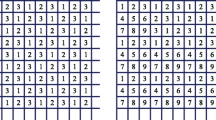Abstract
Considering semantic information in the image compression can prominently improve the quality of synthesized image. In this paper, we propose a multiple description coding network based on semantic segmentation. In the proposed scheme, the semantic segmentation map of input image is encoded as side information to improve the coding efficiency. Firstly, multiple description feature generator network is used to produce multiple description information. Secondly, the produced multiple description information and the semantic segmentation map are fed into the semantic segmentation encoder network to obtain encoded information. Thirdly, we propose side decoder networks and central decoder network, which are used to decode the image. In the proposed architecture, the semantic information is auxiliary information, which is used to compensate the difference between the input image and generated image. After testing the two datasets, it can be seen that when the bit rate is greater than 1BPP, the PSNR can exceed 40. Therefore, the proposed method is feasible.








Similar content being viewed by others
References
Agustsson E (2017) Soft-to-hard vector quantization for end-to-end learned compression of images and neural networks
Agustsson E, Tschannen M, Mentzer F, Timofte R, Gool LV (2018) Generative adversarial networks for extreme learned image compression
Akbari M, Liang J, Han J (2018) Dsslic: Deep semantic segmentation-based layered image compression. arXiv:1806.03348
Ballé J, Laparra V, Simoncelli EP (2016) End-to-end optimized image compression. arXiv:1611.01704
Bellard F Bpg image format
Cao S, Wu CY, Krhenbühl P (2020) Lossless image compression through super-resolution
Christopoulos CA, Ebrahimi T, Skodras AN (2000) Jpeg2000: the new still picture compression standard. In: Proceedings of the ACM Multimedia 2000 Workshops, Los Angeles, CA, USA, October 30 - November 3, 2000
Feng J, Wen T, Liu S, Jie R, Xun G, Zhao D (2017) An end-to-end compression framework based on convolutional neural networks. IEEE Trans Circuits & Systems for Video Tech PP(99):1–1. https://doi.org/10.1109/DCC.2017.54
Goodfellow IJ, Pouget-Abadie J, Mirza M, Bing X, Bengio Y (2014) Generative adversarial nets. MIT Press
He K, Zhang X, Ren S, Sun J (2016) Deep residual learning for image recognition. In: Proceedings of the IEEE conference on computer vision and pattern recognition, pp 770–778
Herranz L, Jiang S, Li X (2018) Scene recognition with cnns: Objects, scales and dataset bias. IEEE
Kai Z, Zuo W, Gu S, Lei Z (2017) Learning deep cnn denoiser prior for image restoration. In: 2017 IEEE conference on computer vision and pattern recognition (CVPR)
Lili M, Jie L, Upul S, Yao Z, Huihui B, Kaup A (2014) Multiple description coding with randomly and uniformly offset quantizers. IEEE Trans Image Process 23(2):582–595
Liu M, Zhu C (2009) Enhancing two-stage multiple description scalar quantization. IEEE Signal Process Letters 16 (4):253–256. https://doi.org/10.1109/LSP.2009.2014104
Lu X, Wang W, Danelljan M, Zhou T, Gool LV (2020) Video object segmentation with episodic graph memory networks
Lu X, Wang W, Ma C, Shen J, Porikli F (2020) See more, know more: Unsupervised video object segmentation with co-attention siamese networks. IEEE Trans Pattern Anal Mach Intell PP(99):1–1
Lu X, Ma C, Shen J, Yang X, Reid I, Yang M-H (2020) Deep object tracking with shrinkage loss. IEEE transactions on pattern analysis and machine intelligence
Lu X, Wang W, Shen J, Crandall D, Luo J (2020) Zero-shot video object segmentation with co-attention siamese networks. IEEE transactions on pattern analysis and machine intelligence
Mentzer F, Toderici G, Tschannen M, Agustsson E (2020) High-fidelity generative image compression
Minnen D, Ballé J, Toderici G (2018) Joint autoregressive and hierarchical priors for learned image compression. CoRR abs/1809.02736, 1809.02736
Ollivier Y (2014) Auto-encoders: reconstruction versus compression. Computer ence
Simonyan K, Zisserman A (2014) Very deep convolutional networks for large-scale image recognition. Computer Science
Sutskever I, Krizhevsky A, Hinton GE Imagenet classification with deep convolutional neural networks
Theis L, Shi W, Cunningham A, Husz?r F (2017) Lossy image compression with compressive autoencoders
Toderici G, O’Malley SM, Hwang SJ, Vincent D, Minnen D, Baluja S, Covell M, Sukthankar R (2015) Variable rate image compression with recurrent neural networks. Computer Science
Toderici G, Vincent D, Johnston N, Jin Hwang S, Minnen D, Shor J, Covell M (2017) Full resolution image compression with recurrent neural networks. In: Proceedings of the IEEE conference on computer vision and pattern recognition, pp 5306–5314
Vaishampayan VA (1993) Design of multiple description scalar quantizers. IEEE Trans Inf Theory 39(3):821–834. https://doi.org/10.1109/18.256491
Van De Sande KEA, Gevers T, Snoek C (2010) Evaluating color descriptors for object and scene recognition. IEEE Trans Pattern Analysis and Machine Intell 32:1582–1596
Wallace GK (1992) The jpeg still picture compression standard. Communications of the Acm 38(1):xviii–xxxiv
Wang T-C, Liu M-Y, Zhu J-Y, Tao A, Kautz J, Catanzaro B (2018) High-resolution image synthesis and semantic manipulation with conditional gans. In: Proceedings of the IEEE conference on computer vision and pattern recognition, pp 8798–8807
Zhao H, Gallo O, Frosio I, Kautz J (2017) Loss functions for image restoration with neural networks. IEEE Trans Comput Imaging 3(1):47–57. https://doi.org/10.1109/TCI.2016.2644865
Zhao L, Bai H, Wang A, Zhao Y (2018) Deep multiple description coding by learning scalar quantization
Zhao L, Bai H, Wang A, Zhao Y (2018) Multiple description convolutional neural networks for image compression. IEEE Trans Circuits and Systems for Video Tech, p 1–1. https://doi.org/10.1109/tcsvt.2018.2867067
Zhou B, Garcia AL, Xiao J, Torralba A, Oliva A (2015) Learning deep features for scene recognition using places database. Advances in neural information processing systems, 1
Zhou B, Hang Z, Puig X, Fidler S, Barriuso A, Torralba A (2017) Scene parsing through ade20k dataset. In: Computer vision & pattern recognition
Zong J, Meng L, Zhang H, Wan W (2017) Jnd-based multiple description image coding. Ksii Trans Internet & Info Systems 11(8):3935–3949
Author information
Authors and Affiliations
Corresponding author
Additional information
Publisher’s note
Springer Nature remains neutral with regard to jurisdictional claims in published maps and institutional affiliations.
Rights and permissions
About this article
Cite this article
Li, X., Meng, L., Tan, Y. et al. Multiple description coding network based on semantic segmentation. Multimed Tools Appl 81, 29075–29091 (2022). https://doi.org/10.1007/s11042-022-12654-0
Received:
Revised:
Accepted:
Published:
Issue Date:
DOI: https://doi.org/10.1007/s11042-022-12654-0




